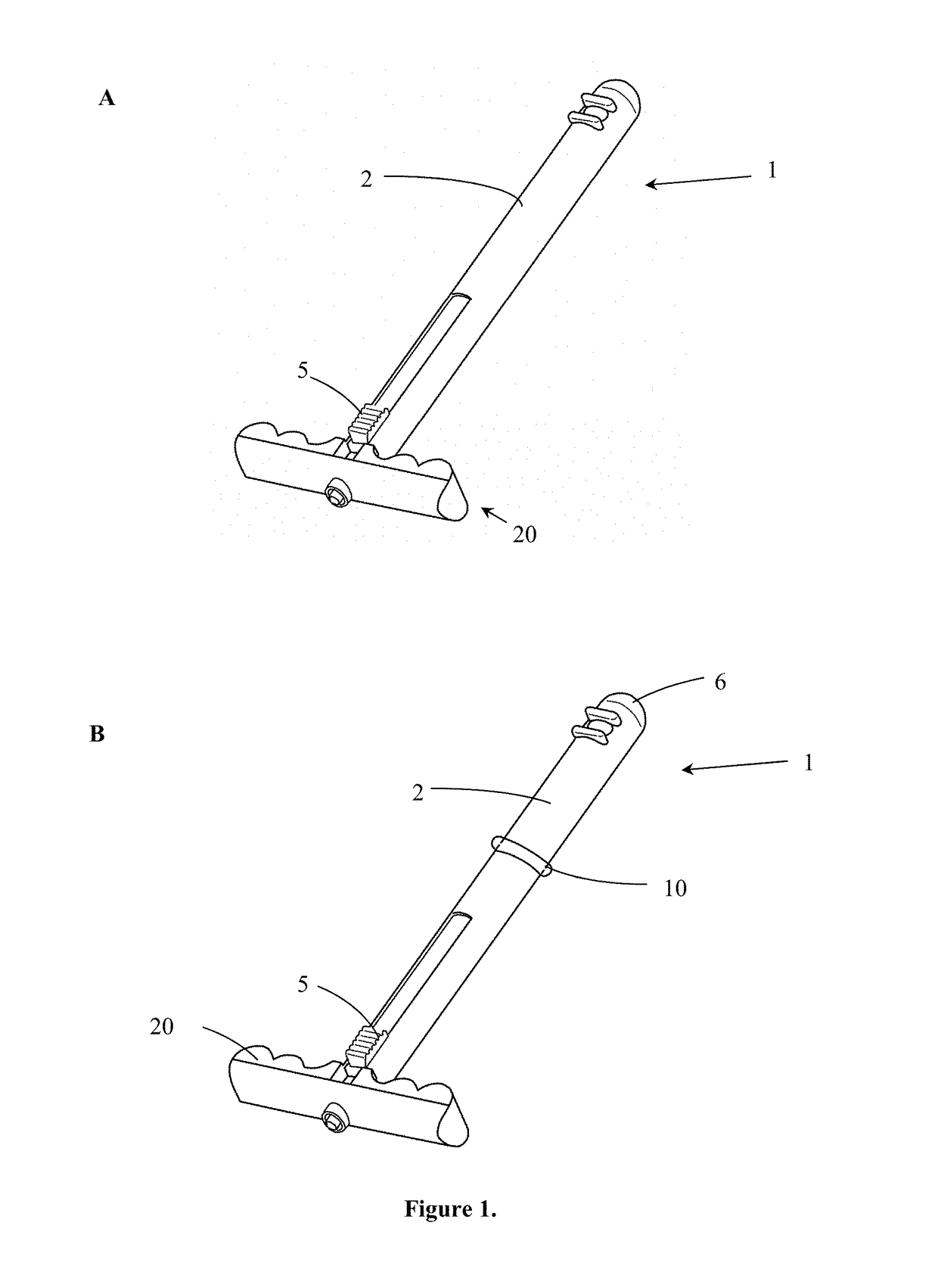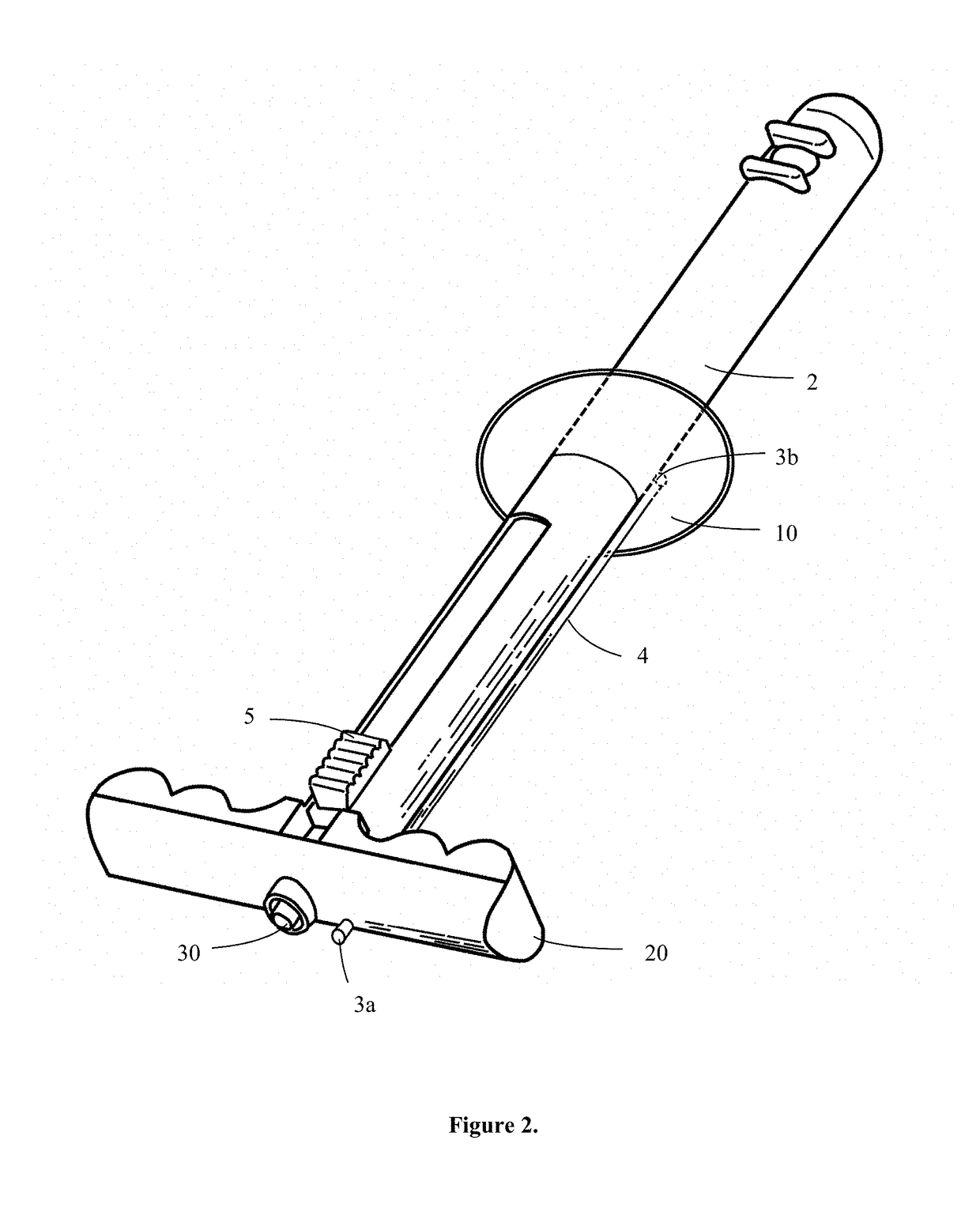Transvaginal specimen extraction device
a transvaginal and specimen technology, applied in the field of laparoscopic instruments and use, can solve the problems of increasing costs, unable to remove large specimens, and removing pathologic specimens that are larger than port sites, and achieve the effect of effective specimen removal
- Summary
- Abstract
- Description
- Claims
- Application Information
AI Technical Summary
Benefits of technology
Problems solved by technology
Method used
Image
Examples
example
[0067]Laparoscopic instrument 1 optionally comprises a curved sheath 2, comprising interstitial space 60, seen in FIG. 11. Instrument channel 65 is disposed in curved sheath 2, and is adapted to accept laparoscopic surgical tools, such as instruments, implants, sponges, needles or other objects. The instrument channel is fixed within interstitial space 60 on the proximal and distal ends of the instrument channel to the interior walls of curved sheath 2 by means known in the art, such as thermal welding. Alternatively, instrument channel 65 is formed in a solid curved sheath 2, i.e. the instrument channel forms interstitial space 60, as seen in FIG. 12. Instrument seal 50 is disposed on the proximal end of instrument channel 65 and forms a seal against any laparoscopic tools used, thereby maintaining pneumoperiotoneum. Instrument channel 65 may have a curve or be straight, fitting in sheath 2 as seen in FIG. 12, and may end in the distal end of sheath 2 or on the wall of the sheath 2...
PUM
 Login to View More
Login to View More Abstract
Description
Claims
Application Information
 Login to View More
Login to View More - R&D
- Intellectual Property
- Life Sciences
- Materials
- Tech Scout
- Unparalleled Data Quality
- Higher Quality Content
- 60% Fewer Hallucinations
Browse by: Latest US Patents, China's latest patents, Technical Efficacy Thesaurus, Application Domain, Technology Topic, Popular Technical Reports.
© 2025 PatSnap. All rights reserved.Legal|Privacy policy|Modern Slavery Act Transparency Statement|Sitemap|About US| Contact US: help@patsnap.com



